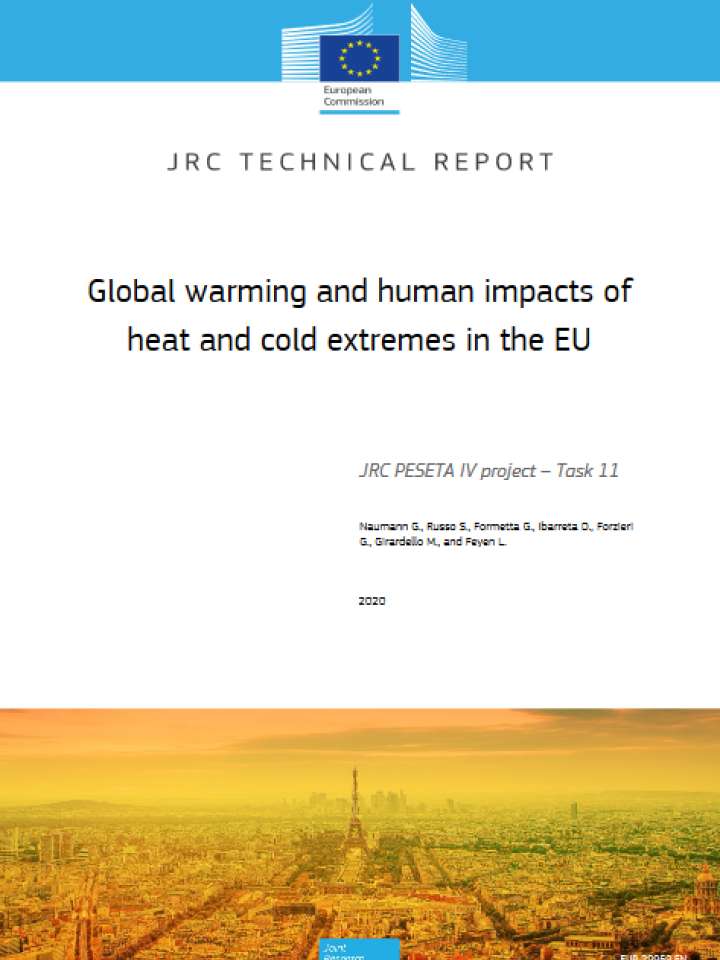Global warming and human impacts of heat and cold extremes in the EU
This report shows that a strong and persistent increase in heatwaves and a reduction in extreme cold spells all over Europe. With unmitigated climate change, a current 50-year heatwave may occur almost every year in southern Europe, whereas in other regions of Europe such events may happen every 3 to 5 years. Cold waves, on the other hand, tend to disappear in Europe under high levels of warning (3°C).
The paper argues that in the absence of additional adaptation actions, this could result in a rapid rise in the death toll due to heat-related disasters in Europe, which is somewhat more pronounced in southern European countries. Extreme cold-induced fatalities, which are much smaller in absolute terms than those from extreme heat, will strongly decrease in all regions of Europe and also somewhat more in southern Europe.
The authors' projections show that climate mitigation can considerably reduce the number of people exposed to and killed by extreme heat. Limiting warming to 1.5°C could reduce the number of heat fatalities by 200,000 per year compared to unmitigated climate (3°Cof global warming). Yet, even when this stringent mitigation target is reached, the number of fatalities from extreme heat could still be ten-fold the number of deaths reported today. Hence, societies will need to adapt to be able to cope with the strong rise in heatwaves.
Explore further
